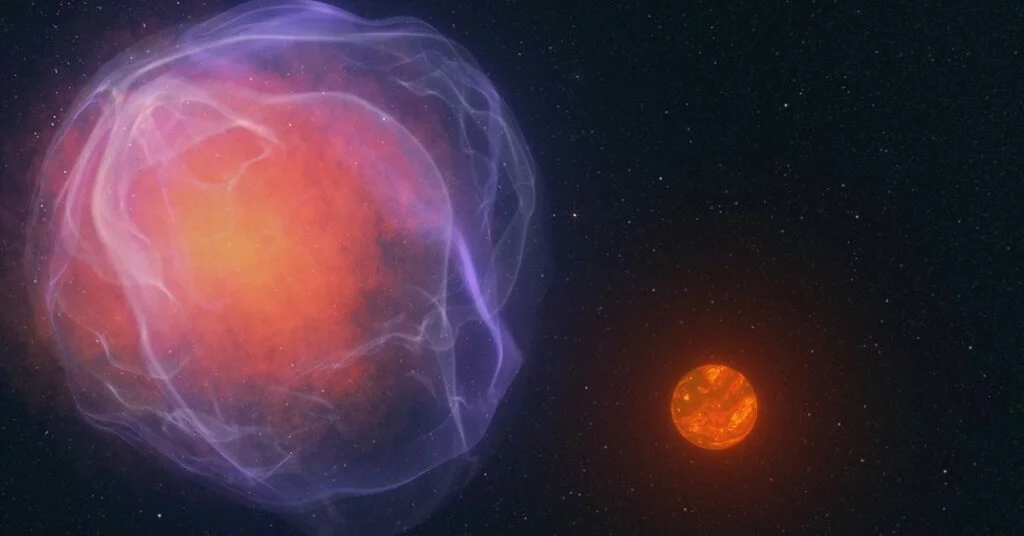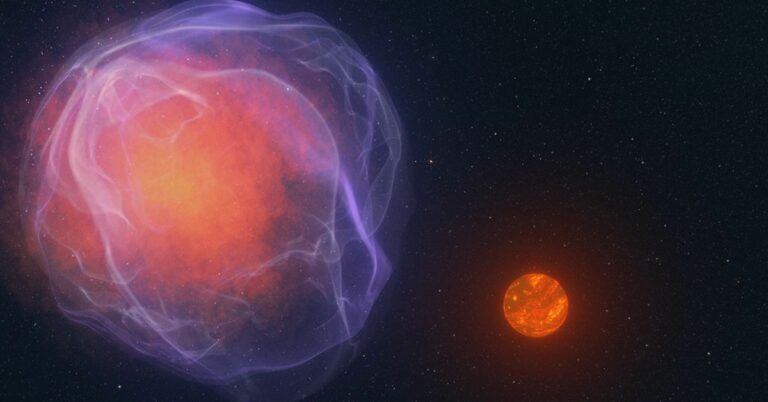NASA Citizen Scientists Discover Object Traveling at 1 Million Miles Per Hour
With the possible exception of the younger open clusters most of the stars to be found orbiting in the Milky Way are stable and non-violent. However, citizen scientists participating in NASA’s Backyard Worlds: According to researches from the Planet 9 project, there is an incredibly fast-moving object that will escape the galaxy’s pull and travel beyond the intergalactic void. This hypervelocity object is the first known to to be of the same mass or less than a small star.
The Backyard Worlds project is based on images from the NASA’s wide field infrared explorer (WISE) mission which observed the sky in the infrared wavelengths between 2009 and 2011. The mission was revived in 2013 as NEOWISE (Near Earth Object Wide-field Infrared Survey Explorer ) and the mission ended on the August 8, 2024.

A few years back, three veterans of the Backyard Worlds project Martin Kabatnik, Thomas P. Bickle, and Dan Caselden discovered a weak and rather small moving object of the constellation called CWISE J124909. 08+362116. 0 when inspecting WISE images south 0 of state and county boundaries when using the databases. Subsequent observations with ground based facilities, confirmed the object together with a detailed description. Now, these citizen scientists are authors of this work which has been published in the Astrophysical Journal Letters.
“I can’t even put it into words,” those are the words of a citizen scientist from Nuremberg, Germany, whose name is Kabatnik. ‘When I first saw how fast it was moving, I was sure that it must have already been reported. ’
CWISE J1249 is moving at a velocity relative to the Milky Way of about one-million miles per hour. What makes it even more interesting is the fact that the star is relatively lightweight, and thus, categorization is complicated. Perhaps it is a low-mass star or if it does not go on burning hydrogen in its core as a star, it could be a brown dwarf – a classification between the largest planets and stars.
While brown dwarfs are not uncommon—Backyard Worlds: Volunteers at Planet 9 have identified more than 4,000 of them, which have not been observed to exit the Milky Way until now.
This object also has another unique characteristic. Data from the W. M. Keck Observatory in Maunakea, Hawaii, reveal that it contains significantly less iron and other metals than typical stars and brown dwarfs. This unusual composition indicates that CWISE J1249 is quite old, likely originating from one of the first generations of stars in our galaxy.
Why is this object moving at such an extraordinary speed? One theory is that CWISE J1249 may have originated in a binary system with a white dwarf, which exploded as a supernova after accumulating too much material from its companion. Another possibility is that it came from a globular cluster—a tightly bound group of stars—and was ejected after a close encounter with a pair of black holes.
“When a star encounters a black hole binary, the complex dynamics of this three-body interaction can eject the star right out of the globular cluster,” explains Kyle Kremer, an incoming assistant professor in UC San Diego’s Department of Astronomy and Astrophysics.
Scientists will continue to analyze the elemental composition of CWISE J1249 for clues about which of these scenarios is more likely.
This discovery is a testament to teamwork, involving collaboration between volunteers, professionals, and students. Kabatnik credits fellow citizen scientists for their assistance, including Melina Thévenot, who inspired him with her blog on using Astronomical Data Query Language for searches. He also acknowledged the crucial role of software developed by citizen scientist Frank Kiwy in this finding.
The study is led by Adam Burgasser, a professor at the University of California, San Diego, and a member of the Backyard Worlds: Planet 9 science team. It also includes co-authors Hunter Brooks and Austin Rothermich, astronomy students who began their careers as citizen scientists.
Do not forget to share your opinion with us to provide you with the best posts !




0 Comments